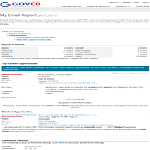Carbide fs laser - CARBIDE-40W-0.4mJ-1MHz from Light Conversion
| Agency: | Utah State University |
|---|---|
| State: | Utah |
| Type of Government: | State & Local |
| Posted Date: | Feb 13, 2024 |
| Due Date: | Feb 20, 2024 |
| Bid Source: | Please Login to View Page |
| Contact information: | Please Login to View Page |
| Bid Documents: | Please Login to View Page |
| Bid # | Description | Closing Date & Time |
|
Sole Source |
Carbide fs laser - CARBIDE-40W-0.4mJ-1MHz from Light Conversion
Must have an output of 0.4 mJ at 100 kHz The CARBIDE-40W laser is based on Yb doped crystal lasing medium (in both OSC and Regen) and has solid state design with Kerr-lens mode locking for long-term serviceability and reliability. In the CARBIDE, there is no fiber involved at all (vs. competition’s fiber-based MOPA architecture and all-fiber solutions), which allows us to achieve an unmatched combination of: - max energy of 0.4 mJ/pulse at up to 100 kHz - high pulse-to-pulse stability of Having such short pulses with high energies and high stability from the CARBIDE lasers is important for driving OPAs and harmonic generators, for example, to achieve high output energies, optimal conversion efficiency and most stable output required by experiments (since an OPA is a passive device, its stability is influenced by stability of the pump laser) A solid-state laser such as CARBIDE has certain distinct advantages over a fiber laser. In particular, CARBIDE has very clean pulses with no pulse pedestal, giving substantially better parametric conversion than is typically possible with fiber lasers. While comparing CARBIDE with Ti:Sapphire lasers, it should be noted that CARBIDE Yb lasers are directly diode pumped, and so are made compact and robust. Ti:Sapphire systems are notoriously large, and tend to require substantial alignment & maintenance. They have to be pumped by frequency doubled IR lasers, so there is a pump laser for the oscillator, another one for the regen, and additional for amplification stage(s). In addition, CARBIDE systems work fine at both low rep rates and high rep rates, while Ti:Sapphire lasers generally work well up to 5-10 kHz but struggle at higher rep rates due to thermal effects Ability to pump more than one OPA/NOPA and add OPAs in future since CARBIDE lasers produce plenty of energy for this. Contact jill.ballard@usu.edu with questions |
02/20/2024
1:00 PM |
Sign-up for a Free Trial, Government Bid Alerts
With Free Trial, you can:
You will have a full access to bids, website, and receive daily bid report via email and web.
See Also
RFP #23-03791AB - Light Rail Vehicles Posted 12/27/2023, Closes 4/30/2024
Utah Transit Authority
Bid Due: 4/30/2024
